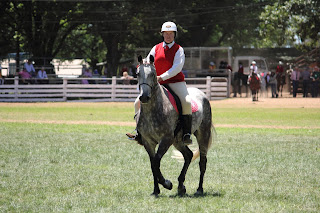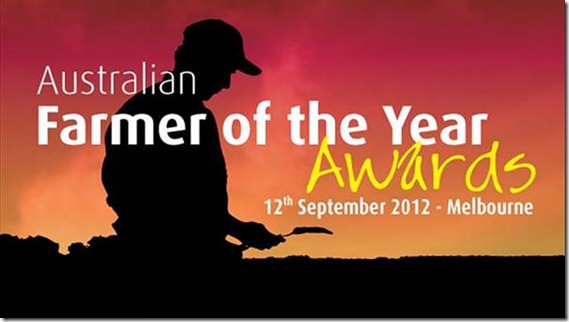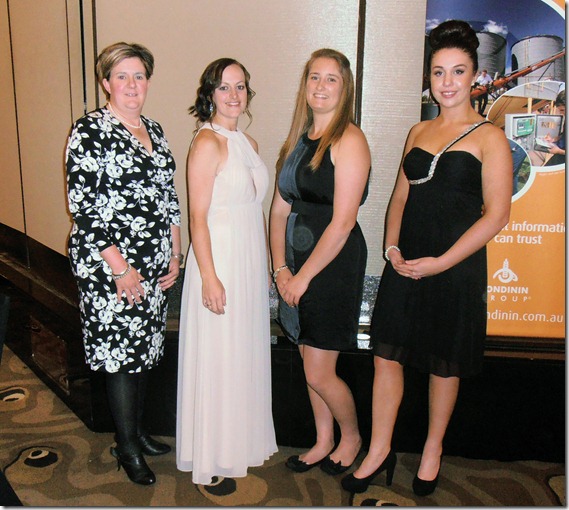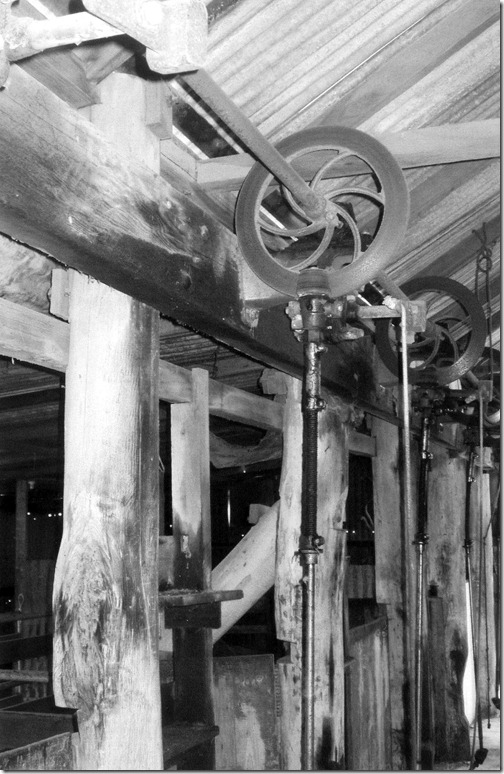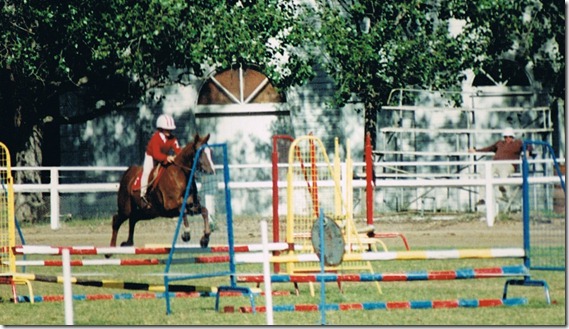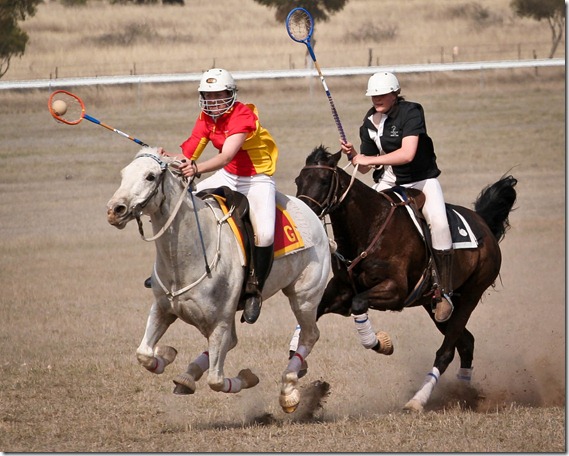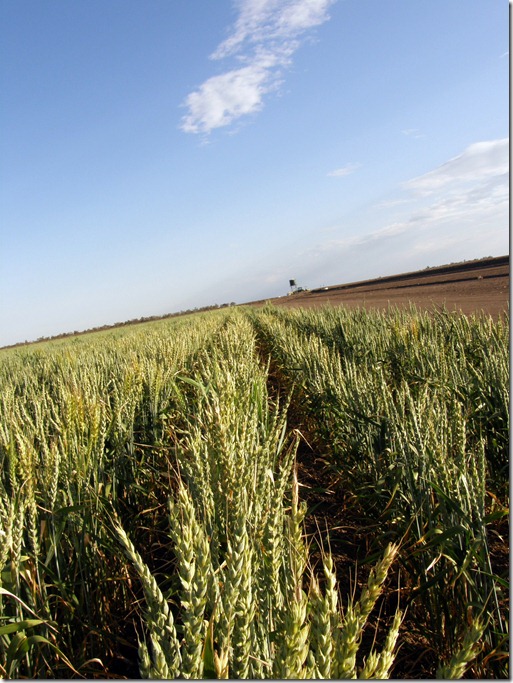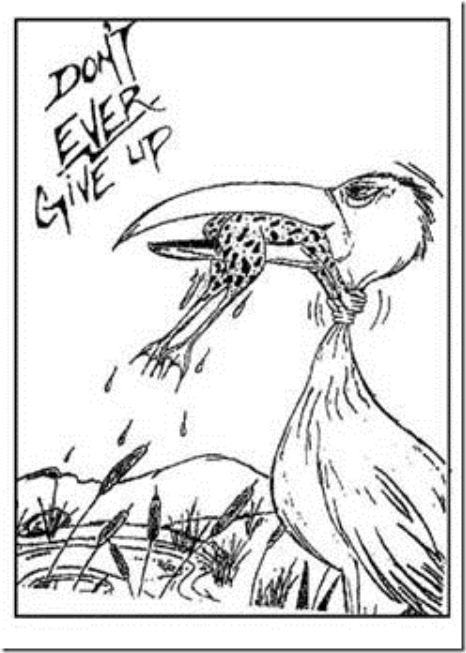Sometimes at cringe at the speed and places these kids put themselves in and can't imagine what it wouldve been like for my own parents! I love the comradery and sportsmanship that comes with the territory of owning and loving and competing with horses. Theyre so much more, than 'just a horse'.
Monday, 3 December 2012
Pony Camp..back to my roots
Growing up, I was always involved with all things horses. Now times have come full circle and it is now my nieces and nephews are competing. This year I was lucky enough to drop by the Pony Camp and watch the kids giggle as they bounced over jumps, weave in and out in the bending races and kick their ponies along so much so you would think they would fly.
Tuesday, 23 October 2012
Young Professionals in Agriculture
It’s exciting to see and even
more humbling and rewarding to sit a room full of Young Professionals in
Agriculture all from different backgrounds and yet all having a common and
united goal, “To start and keep the Agricultural conversation going”.
Costa Georgiadis opened the
forum, instilling enthusiasm and such a positive message into the room. Costa has been able to use ABC’s Gardening
Australia as a platform to reach those in urban Australia. ‘Agriculture is the
kitchen sink of the city’. The work that is being carried out in Bondi by
planting herb and vegetable gardens on the curbs of streets to involve
communities has demonstrated that its possible in urban areas. He believes in
looking at cultural barriers and going around them with vocabulary. Information
is just facts which leave a chasm of opportunity. It is the understanding and
passion of this information, that is knowledge. You need to use vocabulary in
order to engage with people. A perfect example of this is where instead of
creating a herb garden, a ‘herb maze’ was created. This engaged people as we
are inquisitive by nature, and encouraged people to find out what a ‘herb maze’
entailed as opposed to a simple old garden. Well nothing really. Simply some
bark chips for a footpath through the garden in a snail formation. It was the
same garden but it attracted and engaged the community.
I have worked extensively with
Ann Burbrook through the Young Farming Champions program, and she didn’t fail
to impress at the forum. Ann has a way of encouraging those that weren’t apart
of the five people in the room of around ninety, that put their hand up because
they enjoyed public speaking. Most of us are terrified by the very thought. To
speak in public, firstly you need the courage to get up there and then
secondly, the confidence to deliver your presentation with passion. It isn’t in
fact, about you. It’s about the audience and what you want them to be thinking,
feeling and doing. There are many factors in getting your audience to do what
you want. This includes your voice, your stance and of course your content.
What’s your message?
Tony Peacock, Chief Executive of
CRC, introduced the room to the world of Twitter and the merits it provides. We
learnt that as followers on twitter, we want posts to be informative, funny and
exciting. Not boring and arrogant. No real surprises there however we also
learnt that followers like to be challenged and questioned and don’t mind the
odd random thought.
We’re also doing a pretty good
job of communicating as scientists to other scientists, but we need to think
about how to communicate to producers so that it’s valuable to them and then in
turn to the community.
Brendan Fox spoke about Building
the Knowledge base and how to get value from the internet. Theres around 620
million spaces for information, so sorting through the valuable information can
sometimes be a challenge.
The Q & A Panel, though I
found most interesting. Most topics focussed on education, inspiration and
engagement for the Agricultural Industry as whole. Some topics covered were
that there are many jobs out there, but where are they and how do you find
them? Sustainability of agriculture and also branding of the industry and
individual in agriculture was discussed. One major concern was how to involve
kids to get a better understanding of the industry at a young age to encourage
curiosity as they grow up and leave school. The Young Farming Champions program
was a perfect example of how this is beginning to happen. The agricultural
sector needs to have more of a voice and to do that we need three key points to
market our ideas.
Overall the whole day was
incredibly inspirational and informative. I would like to thank the Sydney
University and Young Professionals in Agriculture team for getting the whole
day up and running and to those guest speakers who donated their time for the
day. I would also like to extend my gratitude to Australian Wool Innovation
(AWI) for giving me the opportunity to attend as part of my personal
development through the Young Farming Champions Program. I believe these are
the types of platforms people in the Agricultural Industry need to find and
attend as it’s an exciting industry to be a part of and we need to encourage
more to do so.
Friday, 12 October 2012
Springtime SNOW!
So its October. Sunny warm October right?? WRONG!! We woke up this morning to a glistening fluffy carpet of snow. Beautiful, crunchy snow!
This was the beautiful sky the afternoon before. Such amazing colours
Apparently playing in the snow is lots of fun!
Some truely magical scenes
The most gorgeous day followed after the snow cleared. We don't often get snow here at home, but definitely not in October! 'Twas a pretty magnificent treat.
Tuesday, 2 October 2012
Shearing time!!
Shearing time!! One of my favourite times of year. I just love the buzz of the shed and the constant hum of the handpiece.
This year I was away during the later half of shearing for my Art4Agriculture Young Farming Champion visits in Sydney. I visited two schools and although they were 'chalk and cheese', I couldnt have enjoyed it more! The students are so responsive and quite often it is so far removed from what it is that they get to experience in their lives. And even if they have some 'experience' with Ag, the misconceptions are far and wide. I love having the opportunity to be able to engage with the next generation and hopefully I can spark some enthusiasm and curiosity in the wonderful industry of Agriculture!
This is a promo shot for my sponsor, Australian Wool Innovation. They have been amazing throughout the whole experience, and I cant thank them enough. They really do go over and above for us.
This year I was away during the later half of shearing for my Art4Agriculture Young Farming Champion visits in Sydney. I visited two schools and although they were 'chalk and cheese', I couldnt have enjoyed it more! The students are so responsive and quite often it is so far removed from what it is that they get to experience in their lives. And even if they have some 'experience' with Ag, the misconceptions are far and wide. I love having the opportunity to be able to engage with the next generation and hopefully I can spark some enthusiasm and curiosity in the wonderful industry of Agriculture!
This is a promo shot for my sponsor, Australian Wool Innovation. They have been amazing throughout the whole experience, and I cant thank them enough. They really do go over and above for us.
Thursday, 20 September 2012
All things SPRING! :)
So its been a while seen I've put a post up but Ive been a busy girl!! Between shearing and my new Art4Agriculture endeavours as a Young Farming Champion, spare time has been a little elusive! But more details on all of that to come.
At the moment, especially with days like today, I am LOVING spring! I have the most gorgeous apple tree right out the front of my house that is in full blossom at the moment along with all the other bushes around attracting all things spring. The calves popping up and lambs to follow never cease to pull at heart strings every year either :)
At the moment, especially with days like today, I am LOVING spring! I have the most gorgeous apple tree right out the front of my house that is in full blossom at the moment along with all the other bushes around attracting all things spring. The calves popping up and lambs to follow never cease to pull at heart strings every year either :)
Friday, 14 September 2012
Farmer of the Year Awards; An Inspirational Night to Showcase Some of Australian Agriculture's Best
This was a blog a wrote about a night I got to share with some of Australian Agricultures most inspiring.
It was a privilege and an honour to attend the Farmer of The Year Awards 2012 held at the Grand Hyatt in Melbourne, last Wednesday September 12, 2012 with my three fellow Wool Young Farming Champions. This opportunity was made possible by Australian Wool Innovation and I would like to extend my sincerest thankyou to them.
2012 Young Farming Ambassador Kathleen Allan and Champions Stephanie Grills, Lauren Crothers and Sammi Townsend
It was also such a privilege to be amongst a room of such high calibre producers from across the country as well as industry professionals. Not only were we in a room with these people but we were seated with them for the awards night. Over the course of the night I got to sit with a range of people, including John Webb Ware who is a Senior Consultant for the Mackinnon Project, the lovely Annie who has a background in genetics and Dubbo sheep producers and Wool Producer of the Year finalists, Don and Pam Mudford of Parkdale Merino Stud.
Don Mudford, along with his wife and sons, focus on breeding animals for both meat and wool characteristics on their 4200ha farm. Labour efficiency is a key driver in their operation, with a focus on easy care sheep. The management on farm and also farm facilities help to make this achievable. They have selected rams for their breeding values, focussing on eye muscle and fat depth.
It was also an honour to meet Daryl and Irene Croak from Oak Hills Merino Stud in the Central Tablelands. They are no stranger to awards in the Wool Industry, but said it was great to be a part of a night that wasn’t just focussed on Wool and were amazed at the diversity of Australian Farming. They also had the highest praise for the Young Farming Champions program.
Over the course of the night, it became quite evident that the industry is moving forward. Farmers are more sustainable and resourceful than ever before and it was said that “Innovation” is usually the stuff your neighbours think at the beginning, you’re crazy for trying and question if you haven’t lost your marbles! It is these innovative practices that have enabled Australian Agriculture to be at the top of the game.
Farmer of the Year 2012 winner and also Grain Grower of the Year winner, Peter Kuhlmann, farms 9000ha in possibly one of the most difficult regions of the country, just east of Ceduna, South Australia. With just 291mm average of rainfall per year, Mr Kuhlmann has to balance timing of seeding, weed control and water use efficiency, knowing all too well the phrase ‘that every drop counts’. He describes himself as an innovator and is often amongst the first to adopt new technologies and on farm trials to evaluate them.
Peter Kuhlmann
It was also very inspiring to listen to the Young Farmer and Farming Woman of the Year finalists and winners. If the night was any indication of what lies ahead, Australian Agriculture has a very bright future.
Tuesday, 14 August 2012
I love being a woman in Agriculture!
Saturday, 4 August 2012
Australian Agriculture - Feeding the World Sustainably
Ask An Aussie Farmer is a facebook page created by a group of farmers to have your food and fibre questions answered by those that produce it for you. I was lucky enough to join the team mid 2012 and love being apart of sharing the Australian Agriculture story with those that visit.
Along with answering questions that we get, the team also endeavours to try to showcase the many facets of agriculture that Australia possesses.
Here is a poster I put together as a starter for our posters series. How awesome is Aussie Agriculture?!
Please come on over and check out our Ask An Aussie Farmer facebook page and say hello!
https://www.facebook.com/askanaussiefarmer
Along with answering questions that we get, the team also endeavours to try to showcase the many facets of agriculture that Australia possesses.
Here is a poster I put together as a starter for our posters series. How awesome is Aussie Agriculture?!
Please come on over and check out our Ask An Aussie Farmer facebook page and say hello!
https://www.facebook.com/askanaussiefarmer
Monday, 23 July 2012
This is the blog post I wrote for my entry for the Art4Agriculture Young Farming Champions program. It covers why I am so proud to be apart of the Australian Agricultural Industry and why I think it has such a fantastic future...
In the late 1600’s, John Grills and his wife Urah, moved to St. Mellion, Cornwell England, where John practiced the trade of a worsted-comber 1. Four generations later, John (IV) and his wife Rebecca, decided to emigrate to Australia, settling in Maitland, NSW where John was a soldier, stonecutter and farmer. Their son Thomas, moved to Saumarez, Armidale where he married Ellen O’Connor and selected land on the eastern fall country of the New England Tablelands in 1881. Thomas and Ellen had 11 children, who went on to have 73 grandchildren, many of whom remained on the land. This property, along with later purchases, remains in the family to this day.
Agriculture was also very prominent in my mothers’ side of the family. In 1833, in Langport, Somersetshire England, John Turner married his wife Sophia. Four children later, they decided to make the journey to Australia in 1849. Initially settling in Adelaide they followed the Gold Rush to Victoria where they settled in Adelong in 1860. Here, John invented the first known steam crushing mill for gold. They also erected a school and were well respected in the area. The family continued the Agricultural tradition and bred cattle and sheep, as well as operating a dairy, wine and chaff making industries. One of their sons, Octavius (Doc), moved to the New England area which is where my mums’ family have remained.
After selecting the original country in 1881, a further two blocks of land were purchased over the next 40 years by Thomas and Ellen. Ellen went on to leave this land to the women of her family, until her three grandsons took it over as a partnership in 1960. The partnership was dissolved towards the end of the decade, and country was split into three separate properties. My father has gone to great lengths over his lifetime, to get back all of this country to once again make it one, and this is where I had the privilege of growing up as a seventh generation Aussie farmer. You would be quite right to say ‘it’s in my blood’.
The start of a family farm …
My grandfather took on the mammoth task of changing his block into a productive property. The 2200 ha were split into just 5 paddocks at the time, the soil had never seen superphosphate, bare ground was prominent under the heavily timbered country and rabbits were a constant problem. He set about developing the land by ringbarking trees, aerial seeding the country and also spreading super phosphate by plane.
My Grandfather standing amongst the ringbarked trees
The country was first improved on the ground with two TE 20 Ferguson tractors, pulling 7ft gear to put down introduced grasses to improve the productivity of the country in 1954. In 1959, the country benefited from the first aerial fly out of super phosphate in bagged form, which was hand lifted into the plane in 50kg bags. The ground application of super was also put out with the improved pasture seed. In 1972, the first woolshed was built on the northern end of the property. Prior to this, sheep would need to be walked anywhere up to 15 km to the other end of the original property, which my uncle then owned following the partnership being dissolved in 1967.
Original Woolshed
Current Woolshed (extended in late 90’s)
The original livestock were Herefords and Merinos. Market demands and trends have meant a third of the herd remains as a Hereford base, a third is aimed at the Angus premium market and the remaining third aimed at the crossbred market, where high growth rates can be obtained through hybrid vigour. Australian beef is part of the worlds’ highest quality meat, known for its consistency and being safe and disease-free.
In 1964, while already having a Merino flock, the first ewes were purchased from the Fulloons, which are now the sort after ‘Cressbrook’ bloodlines. Fine merino wool and mutton production is still an important part of the production on the property. In the mid – late ‘70s, fat lamb production was introduced, however, their feed requirements were found to be too high for return and they were phased out in the early 1990’s. Wool continues to play an important role and is somewhat iconic on the New England tablelands.
Over the years, improved pasture management has led to a much higher yields and efficiency per hectare. Originally we grew permanent pastures of cocksfoot, fescues, ryegrass and clovers. These days, a high-performance short-term pasture is sown down which includes high performance ryegrasses and herb species such as plantain, chicory and clover to provide finishing feed for fattening cattle, before establishing a high performance permanent pasture.
Improved Pasture
Fertiliser usage on the property has also come a long way over the last century. In the early days, single super was a major investment, with large returns. Currently however, although still important, fertilising the country has moved along with the advancements of soil and pasture testing. The addition of lime and natural products/by-products of other industries, such as chook manure have proven to be worthwhile both in a sustainable, environmental sense and also in regard to return in improved growth of pasture. We have now adapted and are developing the country through means of biological farming; introducing ‘good-bugs’ back into the country.
Surviving three droughts over this time stands testament to those who were looking after it at the time. Future dry times are sure to return cyclically but with the use of sustainable agriculture, increased knowledge and better management practices we are confident we will be resilient.
Like many Australian farmers our family are dedicated to undertaking weed control, pest and disease management and habitat and biodiversity enhancement.
We are testing both our soils and our pastures and creating nutrient maps so we can pinpoint exactly what the soil needs in order to remain ‘fuelled-up’ to continue being sustainably productive.
We have fenced of our waterways and have dedicated areas put aside to increase biodiversity and provide safe habitats for native flora and fauna.
Growing up a Grills…
With such a large extended family and great community spirit, growing up here was something I’ll cherish forever. I have four sisters, three of which are married with 7 kids between them. Horses were a massive part of my childhood and provided many a great time, which still continues today.
Starting early – 12 months old with my Dad
I grew up with them, not ever remembering even how I learnt to ride. My father was a keen and talented campdrafter, whilst us kids competed in ribbon days, and attended pony camp and travelled to shows all around.
Pony Club in 1995
We moved back into the Polocrosse scene when I was about 10, and haven’t looked back since.
Steph says catch me if you can
Cattle and sheep work was simply just a way of life. Very rarely were there ‘days off’, as there was always something that needed to be done or checked. There are many great memories growing up mustering cattle or being lucky and being ‘let into’ the big shearing shed when we were just tiny. From heading out at dusk with Dad, probably when I was meant to be having a bath and getting ready for dinner and bed, to check on a heifer calving, or to go down to give a poddy one last pat goodnight.
It’s a passion instilled as a youngster that I wouldn’t change for quids. I went off to boarding school at 11 years old and counted the hours when I would get to go home of a weekend. The school cattle team brought me some reprieve and ‘filled the gap’ a little. It was here that I had the opportunity to go on and win the National title for Beef Cattle Parader at the Hobart Show in 2002. 

Winning at Hobart Royal 2002
It wasn’t until my final two years of school where I was able to study Agriculture and Biology, that I really found school somewhat enjoyable. So I threw myself into my studies, especially for these two units, and came out the other end of my HSC, with the award for Agriculture, Hospitality and a merit award for Biology. I was accepted early into University through the School/College Recommendation Admission Scheme. However, university wasn’t at the top of my list. I went home to work for twelve months on the farm and decided that I needed some qualifications to back me up. I completed my Certificate IV in Agriculture through a traineeship program at home. But from here I wasn’t sure what to do. I knew I wanted to follow on with Agriculture and I loved the livestock industry, so I enrolled at UNE, to study my Bachelor of Livestock Science.
Although different paths have taken me away from completing this until now, I have learnt a lot in the past few years and have made some wonderful friends across the country.
I even moved to Mungindi, NSW for 2 ½ years to become the offsider in a broadacre spraying operation. Although my family had had cattle on agistment around Moree and I had grown up with a few friends out that way, I knew very little about the cropping industry and its a time which I will cherish both for the knowledge learnt and the great friendships gained.
Mungindi Cropping
The future of Australian Agriculture…
I believe the future for Australian agriculture will be very bright. So many people are now voicing their support for Australia’s food and fibre producers, from all different walks of lifes and as a farmer this is so rewarding to see. No longer are farmers and all those working in the industry, just sitting on the fence, just like me they are starting to share their stories with the community. I am excited to be part of an innovative industry that is leading the world in technology and adapting it on a practical level. I’m very proud to say that Agriculture has been passed down over nine known generations and spans over three centuries just in my family. My hope is that this continues, and that the future generations can be just as proud as I am that they grow world class food and fibre. I also hope by sharing my story I can inspire other young people to follow me into an agricultural career
“Life on The Land – Don’t ever give up!”
1. WOOLCOMBER ( Taken from Family Tree magazine November 1996 Vol 13 no 1)
Woolcombing was part of the process of worsted manufacture. In the manufacture of woollen textiles the raw wool was carded to lay the tangled fibres into roughly parallel strands so that they could be more easily drawn out for spinning. Wool used for worsted cloth required more thorough treatment for not only had the fibres to be laid parallel to each other but unwanted short staple wool also had to be removed. This process was called combing. It was an apprenticed trade, a seven year apprenticeship being the norm in the mid 18th century with apprenticeship starting at about the age of 12 or 13.
The comb, which was like a short handled rake, had several rows of long teeth, or broitches – originally made of wood, later of metal. The broitches were heated in a charcoal fuelled comb-pot as heated combs softened the lanolin and the extra oil used which made the process easier. The wool comber would take a tress of wool, sprinkle it with oil and massage this well into the wool. He then attached a heated comb to a post or wooden framework, threw the wool over the teeth and drew it through them repeatedly, leaving a few straight strands of wool upon the comb each time. When the comb had collected all the wool the comber would place it back into the comb-pot with the wool hanging down outside to keep warm. A second hank of wool was heated in the same way. When both combs were full of the heated wool (about four ounces) the comber would sit on a low stool with a comb in each hand and comb one tress of wool into the other by inserting the teeth of one comb into the wool stuck in the other, repeating the process until the fibres were laid parallel. To complete the process the combed wool was formed into slivers, several slivers making a top, which weighed exactly a pound. The noils or noyles ( short fibres left after combing) were unsuitable for the worsted trade so were sold to manufacturers of baize or coarse cloth.
Monday, 11 June 2012
NSW Farmers let Down…..Again!
NSW Farmers let Down…..Again!
Do the following industries (and many more!) not contribute enough to qualify?
Will perusing through my emails earlier
today, I had one from NSW Farmers with an attachment. It was their response to
the release of the NSW Budget where regional and remote NSW has missed out
again. It’s disheartening when there is so much that regional and rural NSW
contribute to the nation, and they continually get let down, not only in this state but across the country.
The Government’s claims about
doing up country roads was in fact mostly directed to major highways; $3.8
million of it. Rarely can the majority of the state have access to the benefit
of these upgrades, as important as they might be.
It was also disappointing to note
that no allocation for R & D was made, despite that for every $1 invested,
$10 is shown in return. One such example of the consequences of the cut to R
& D is the closing of the doors for Beef CRC, which contributes phenominal
resources and funding for research projects for the Australian Beef industry and indeed around the globe. Other avenues have been opened up and supported for the arts, social sciences and humanities fields by the government where other avenues for funding are available as a stark contrast for the agricultural based CRC's, where they are not. It is hoped that the existing projects can 'get by' and fund themselves until further funding may be acquired within the next six months...maximum. Hopefully such places as the Department of Primary Industries will come on board, because without them, these projects simply can't go on. It is disappointing when so much money is sent overseas for R &D when organisations in our own living room can't get any.
$80 million will be spent in Myanmar to aid children to finish primary school, train more teachers, supply textbooks and food for those that attend school, $19.5 million will go to addressing poverty in Asia over a 3 year contract and a further $25 million will go to the World Food Programme to aid in alleviating hunger in the developing world. I am not saying that these initiatives aren't important. I do however pose the question, that with the current homelessness rate in Australia estimated to be 105000 people at any given night alone, do we not have an obligation to not only find homes for these people but to also find them jobs so they can sustain themselves. In the last 25 years, the amount of 'boat-people' or 'asylum seekers', has jumped from 111 to almost 5000 per year, where we are happy to keep them in detention centres, providing them with food, water and shelter. Providing much more than to those of our own on the streets. And couldn't some of those funds go towards supporting our nation and the very industries that uphold its backbone?
“Agriculture is an important contributor to the NSW economy. It
generates more than $8.4 billion annually and employs 74,000 people full time.
More importantly, it is the backbone of thousands of rural communities throughout
NSW.”
With these figures, why can’t the
NSW regional, rural and remote communities get a break? They might just simply start packing their bags...
Subscribe to:
Comments (Atom)



